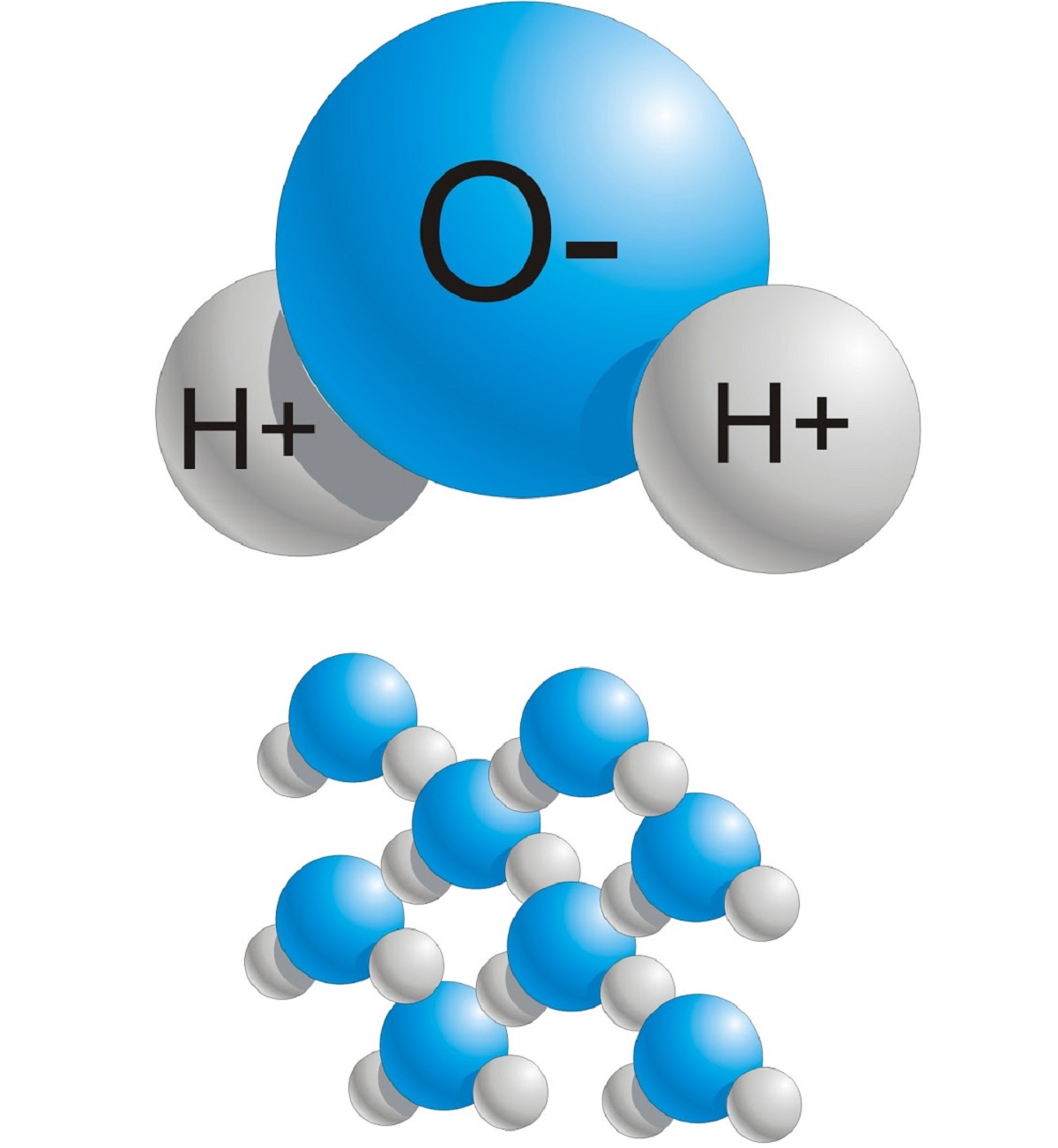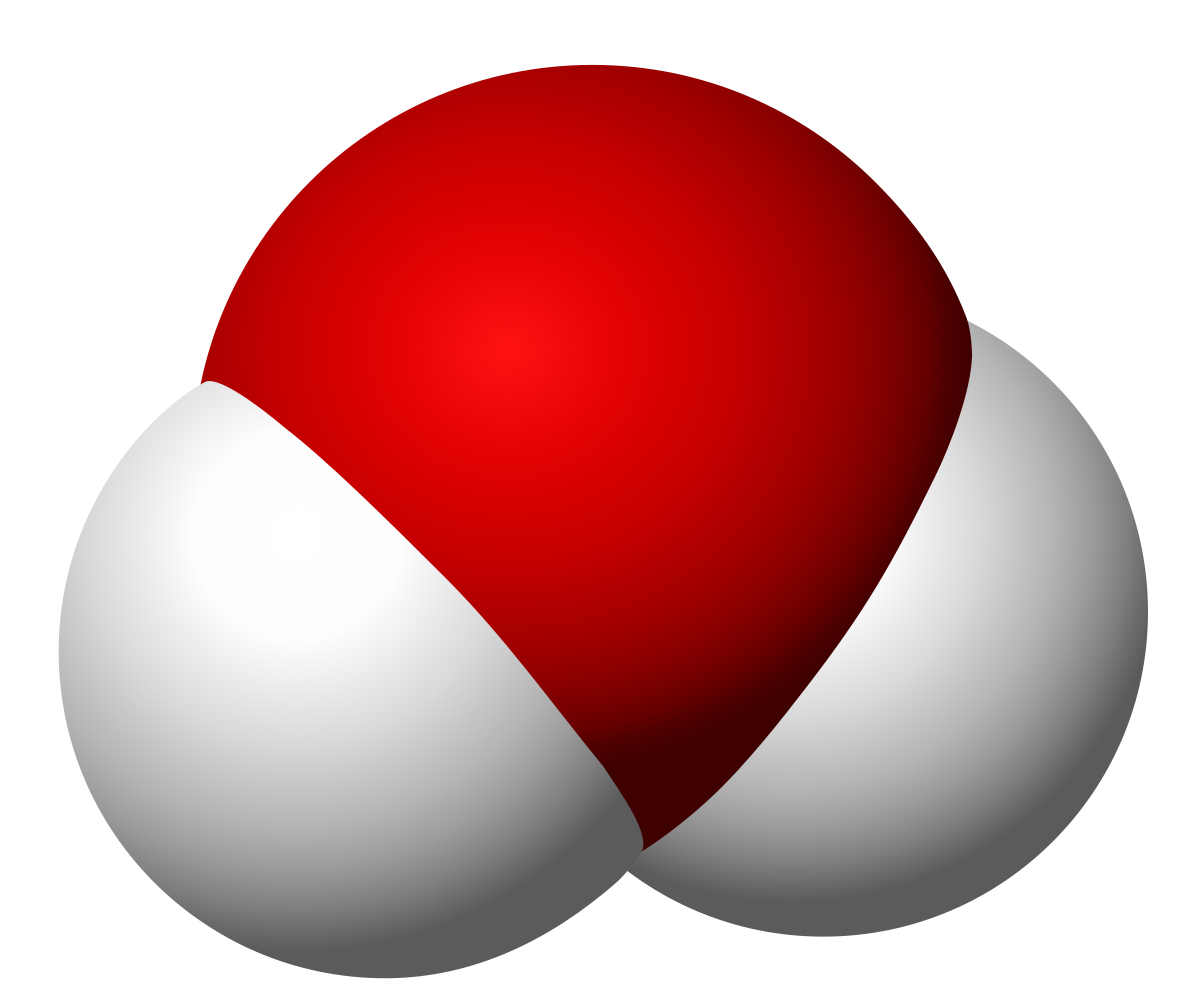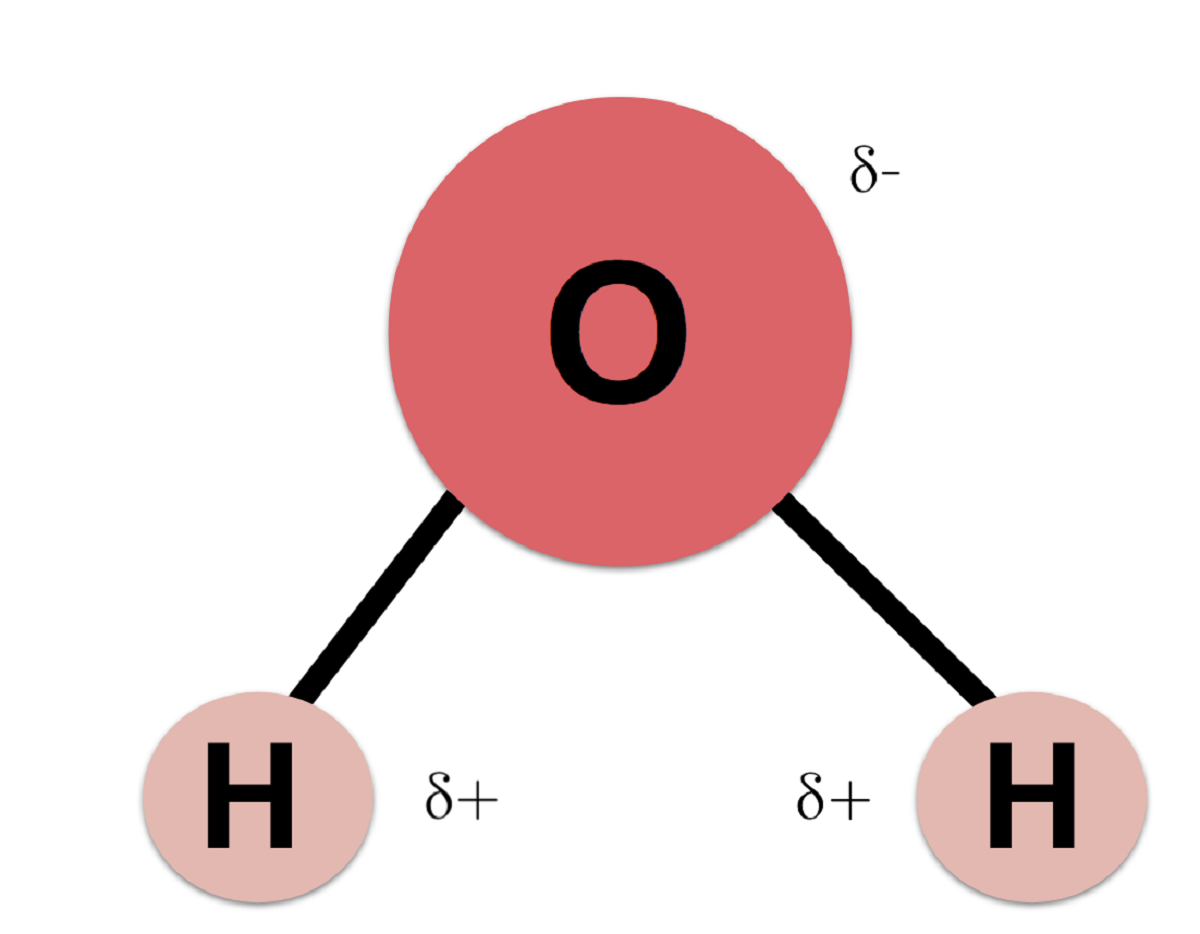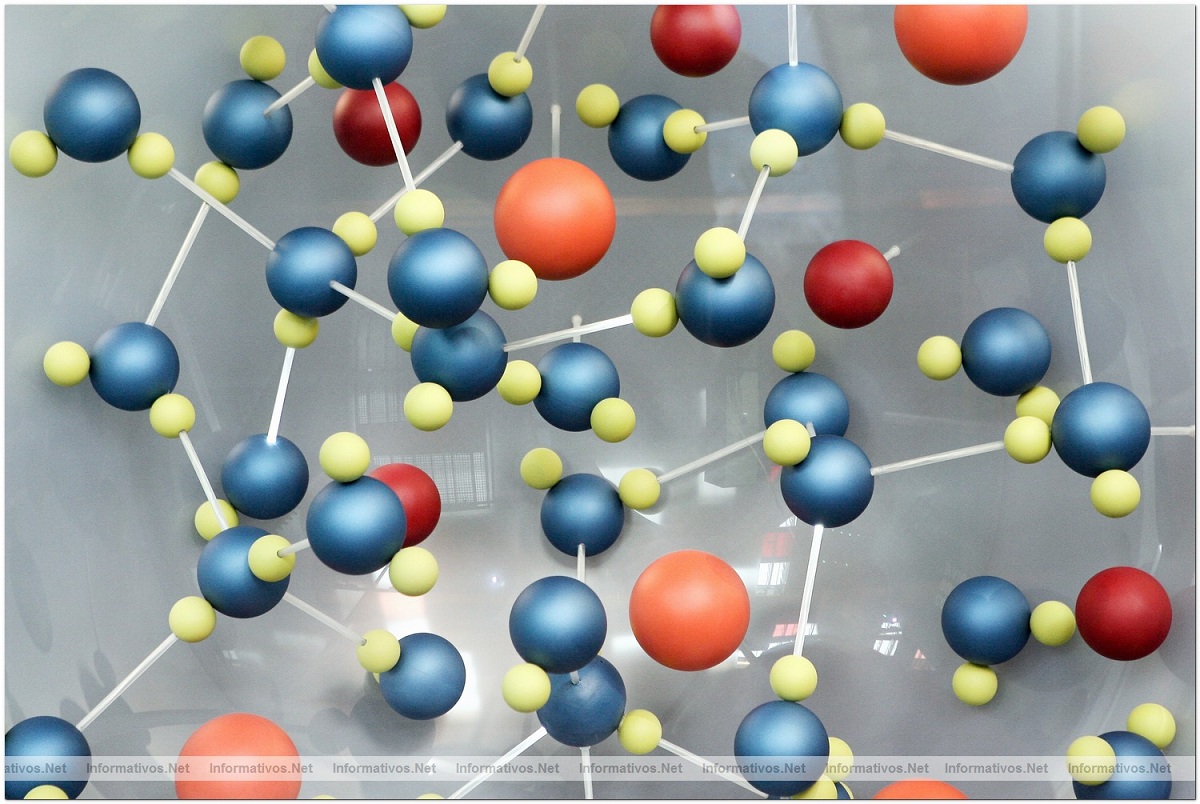
Water is an element that we need to live and for there to be life on earth as we know it today. The water molecule It is composed of two hydrogen atoms and one oxygen atoms joined by a covalent bond. This means that the two atoms of hydrogen and the one of oxygen are united thanks to that they share electrons between them. The formula for the water molecule is H2O. There are many characteristics that the water molecule has and it is thanks to it that there are numerous processes that give rise to the development of life.
Therefore, we are going to dedicate this article to tell you everything you need to know about the water molecule.
Analysis of the water molecule

If we analyze this molecule we can see that the angle of attachment of the covalent bond between hydrogen and oxygen starts from 104.5 degrees. This can be achieved by spectroscopic and X-ray analysis. The average distance between hydrogen and oxygen atoms is of 96.5 pm or, what is the same, 9.65 • 10-8 millimeters.
These distances cannot be compared to anything the human eye can see. The arrangement of the electrons in the water molecule is what communicates the electrical asymmetry since there is a different level of electronegativity between hydrogen and oxygen. We call electronegativity to the ability of an atom to attract electrons that are shared in a covalent bond. We remember that a covalent bond is one that is established between two non-metallic atoms.
Since oxygen has more electronegativity than hydrogen, the electrons are more likely to be closer to the oxygen atom than to the hydrogen atom. This is because electrons are negatively charged. The fact that the electrons go mostly to the oxygen atoms makes the hydrogen atom have a certain positive charge. This charge is called the positive partial charge. That of oxygen is called the negative partial charge.
The difference between positive and negative electrons that are close to both atoms makes the water molecule a polar molecule. That is, the molecule has a part with a negative pole and another part with a positive pole. Although the whole of the molecule is neutral, it is from this polar character that all its physicochemical and biological properties derive.
Interactions between molecules

When several water molecules are very close to each other they are able to establish a traction between the oxygen atoms of the molecules separately. This is because oxygen has a negative partial charge and one of the hydrogens has a positive partial charge. Therefore, the positive part of one water molecule is attracted to the negative part of the other water molecule. This type of interaction between molecules is called as a hydrogen source. It happens a lot in these molecules since they are ordered in such a way that Each water molecule is capable of associating with 4 more molecules. This type of interaction occurs with ice.
The bonds between the hydrogens take place thanks to the fact that there is an atom with a negative partial charge and a hydrogen with a positive partial charge. This makes the links not unique to the water. These interaction bonds also occur in nitrogen, fluorine, and hydrogen in other molecules that contain proteins and DNA.
Let's see what are the physicochemical properties of the water molecule. Among these properties and characteristics we can highlight the capacity and solvent. We must not forget that water is considered the universal solvent. Another characteristic of the water molecule is its high specific heat and its heat of vaporization. It also has great cohesion and adhesion, an abnormal density, and functions as a chemical reagent.
If we use the properties of water we see that it is capable of dispersing a large number of compounds within it thanks to its polar character. As we have mentioned before, although the entire molecule is neutral, the fact that it has a positive part and a negative part is what It gives the physicochemical properties for which water is so necessary for life. Thus, it works with salts and other ionic substances in which the water molecule orients its poles. This orientation of the poles is given as a function of the charges of two ions, putting the negative pole on one side and the positive pole on the other. For example, with polar substances such as ethanol, water acts in a similar way. It opposes one pole against another with the opposite sign of the substance.
Properties of the water molecule

The water molecule has a high specific heat. This specific heat is nothing more than the amount of heat that needs to be administered to a gram of water to be able to raise its temperature one degree. On the other hand, we have the heat of vaporization. This is the amount of vapor that must be applied to a gram of liquid so that it can pass to a gram of vapor. We know that the water molecule has a high specific heat and vaporization thanks to the bonds that join the hydrogen atoms. That is, in order to raise the temperature of the water one degree, all molecules need to increase their vibration. To do this, they break the hydrogen bonds so that they can pass a gram of liquid water to a gram of steam water.
The fact that it has a high value of heat of vaporization is due to it being able to pass. Another characteristic of the water molecule is cohesion. The question is the tendency that two molecules have to be united. Thanks again to the hydrogen bonds of the water molecule, the cohesion is high. Accession is the tendency of two different molecules to bond with each other. This makes the water molecule have high adhesion towards compounds that are ionic and polar. This is the application that takes place when it happens that water sticks to different surfaces.
I hope that with this information you can learn more about the water molecule.